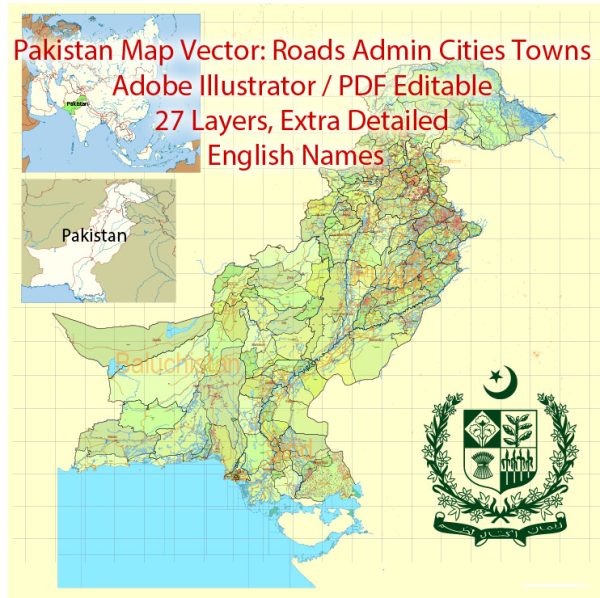Pakistan’s economy exhibited several key characteristics and trends. Here’s a general description of Pakistan’s economy:
- Economic Structure: Pakistan’s economy is predominantly agrarian, with a significant portion of the population employed in agriculture. However, in recent years, there has been a shift toward industrial and services sectors.
- GDP: Pakistan’s Gross Domestic Product (GDP) is typically classified as a lower-middle-income economy. The size of the economy has been growing, with GDP estimated at around $300 billion USD in 2020.
- Agriculture: Agriculture plays a vital role in Pakistan’s economy, contributing significantly to employment and exports. Major crops include cotton, wheat, rice, sugarcane, and maize. The country is also known for producing various fruits and vegetables.
- Industrial Sector: Pakistan has a growing industrial sector, including textiles, manufacturing, and construction. The textiles and clothing sector is a significant contributor to exports.
- Services Sector: The services sector has seen significant growth, with areas like IT services, banking, and telecommunications expanding. Karachi, Pakistan’s largest city, is considered the financial and economic hub.
- Trade: Pakistan’s trade balance has typically been in deficit, with imports exceeding exports. Major export items include textiles, rice, leather products, and surgical instruments, while imports consist of machinery, petroleum products, chemicals, and food items.
- Investment: The country has attracted foreign direct investment in sectors such as energy, infrastructure, and telecommunications. The China-Pakistan Economic Corridor (CPEC) project has been a prominent feature, aiming to improve connectivity and infrastructure in Pakistan.
- Challenges: Pakistan faces various economic challenges, including fiscal deficits, inflation, high unemployment, and security issues. Political instability and governance concerns have also affected economic growth and foreign investment.
- Government Initiatives: The government has introduced various initiatives to address economic issues, including structural reforms, investment promotion, and poverty alleviation programs.
- Currency: The Pakistani Rupee (PKR) is the official currency.
- Economic Development: Pakistan is working on improving its economic infrastructure and development. However, development disparities exist between urban and rural areas and among different provinces.
- External Factors: Pakistan’s economy is affected by external factors like global oil prices, international geopolitics, and trade agreements.


 Author: Kirill Shrayber, Ph.D.
Author: Kirill Shrayber, Ph.D.